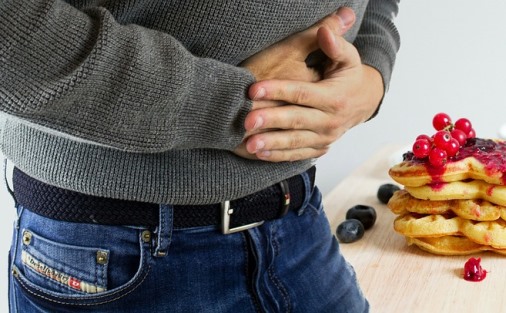- Do you have any redness on our joints?
- Are you experiences pain and swelling in one or more joints?
- Do you feel any stiffness on our joints?
MAY BE YOU HAVE JOINT PAIN…
Joint Pain
Joint pain is characterized by pain or inflammation arising from any part of a joint including cartilage (connective tissue), bone, ligaments (connects two bones), tendons (connection between muscles and bones) or muscles. Mostly it refers to arthritis which is inflammation or pain from within the joint itself. This pain can be mild in nature, causing soreness after certain movement, or it can be severe, making even limited movement, particularly bearing weight, extremely painful.Knee is the largest weight-bearing and most frequently injured joints.
Types of joint pain
Osteoarthritis (OA): A “wearing out” condition occurs when the cartilage of a joint erodes (breaks down). Bones begin to rub against each other, causing pain stiffness and difficulty moving the joint. It can be limited or start in one joint usually the knee, hip, hand, foot or spine. OA usually occurs in people aged 50 years and older, and frequently in individuals with a family history of arthritis.
Rheumatoid Arthritis (RA): It causes the synovial fluid of the joint to become thickened and inflamed which produces excess of fluid within the joint space causing chronic inflammation that damages the cartilage. This results in cartilage loss, pain, and stiffness. RA affects women about 3 times more often than men, and may affect other organs of the body.
Post-Traumatic Arthritis: Usually occur after an injury of the joint in which the bone and cartilage do not heal properly. The joint is no longer smooth and these irregularities lead to more wear on the joint.
Avascular Necrosis: It occurs when bone is poor of its normal blood supply, which may happen after organ-transplantation or long-term cortisone treatment. Without proper nutrition from the blood, the bone’s structure weakens and may collapse and damage the cartilage.
Paget’s disease: A type of bone disease that often affects the hip. Bone formation is sped up, causing the density and shape of the bone to change.
Causes of joint pain
Inflammation of the joint lining: It is characterized by injury followed by pain and inflammation of the thin layer of tissue lining the joints and tendons (traumatic synovitis). It usually does not to cause any redness or heat.
Gout: Gout is caused byaccumulation of uric acid (a waste product) which affects big toe of the joint. Uric acid builds up if the kidneys do not excrete it properly or if too much is produced. The high level of uric acid in the blood forms crystals causing inflamed and severely painful joints.
Damage to the cartilage at the back of the kneecap:Due to overuse of the knee, pain starts accumulatingin the whole regionaround the knee, that worsens while movement during up or down stairs. However, it does not cause any redness or heat around the knee.
Joint space bleeding:Injury to the knee joint, like torn ligament or knee fracture causes bleeding into the joint spaces called as haemarthrosis. It is found mainly in people taking medications (anticoagulant), such as warfarin. It leads to swelling, warmth, stiffness, bruising, which occur soon after the injury in the knee region.
Diagnosis & tests of joint pain
The following tests are the most important test for the diagnosis of joint pain overall:
- Tests of joint fluid (numbers of WBCs in the fluid indicate level of joint inflammation)
- Blood tests for auto-antibodies (e.g. autoimmune disorder such as rheumatoid arthritis)
- Erythrocyte sedimentation rate (blood settling quickly refers to systemic inflammation)
- C-reactive protein (a protein that circulates in the blood and dramatically increases in level when there is inflammation)
Imaging tests: Usually preferred in the bone or joint tumours. X-rays are done first, but sometimes computed tomography (CT) or magnetic resonance imaging (MRI) may be required.
Ayurvedic perspective of joint pain
In ayurveda there are two major types of joint problems. The first type is associated with poorly nourished joints or low bone density and overall weakness in the joints, which results in eventual immobilization of the joints. Due to lack of nourishment the bones starts degenerating. The second type is accumulation of toxins in the joints. As ama (the sticky, toxic waste-product of incomplete digestion) accumulates in the joint, creates stiffness and heaviness. The main cause of joint pain is the formation and deposition ofama at all levels of body The Ayurveda focuses on following therapies:
- Short-term therapy in relieving pain and restoring joint function.
- Intermediate term therapy in controlling inflammation, protection of joints and preserving joint function.
- Long-term therapy in achieving reduction, prevention of complications and minimizing toxic effects of medicines.
Herbal remedies
Various herbs used in the treatment of joint pain includes dashmoolatailam, rasna, eranda (Riciniscommunis) bala (Sidacordifolia), shatavari (Asparagus racemosus), guduchi (Tinosporacordifolia), ashwagandha (Withaniasomnifera), and gokshura (Tribulusterrestris). Oil retention enemas help to replenish the depleted body constituents. Various oils used are PanchkolaGhrita, RasnadiGhrita, AshwagandhaGhrita, ErandaTaila, DhanvantaraTailam and NarayanaTailam.Herbal powder mixtures (Churnas) like AjmodadiChurna, PanchakolChurna, ShunthiChurna, AshwagandhaChurna, DashamoolChurna, RasnaChurna, MustaChurna, VaishwanaraChurna, Kariramoola are preferred in healing of joint pain and inflammation. Tablets of varities of Guggul like SimhanadGuggulu, MahayogarajaGuggulu, YogarajaGuggulu, PunarnavaGuggulu and TriphalaGuggulu are mentioned in the Charaksamhita for reducing inflammation during joint pain. Besides above mentioned therapies, BhallatakaAvaleha, GorakhaAvaleha and Bhallatakaare also used in treatment of joint pain in Ayurveda.Giloy also helps to rejuvenate joints and increases their mobility;Tinosporacordifolia (guduchi) is very helpful in conditions like arthritis, gout, osteoarthritis.












